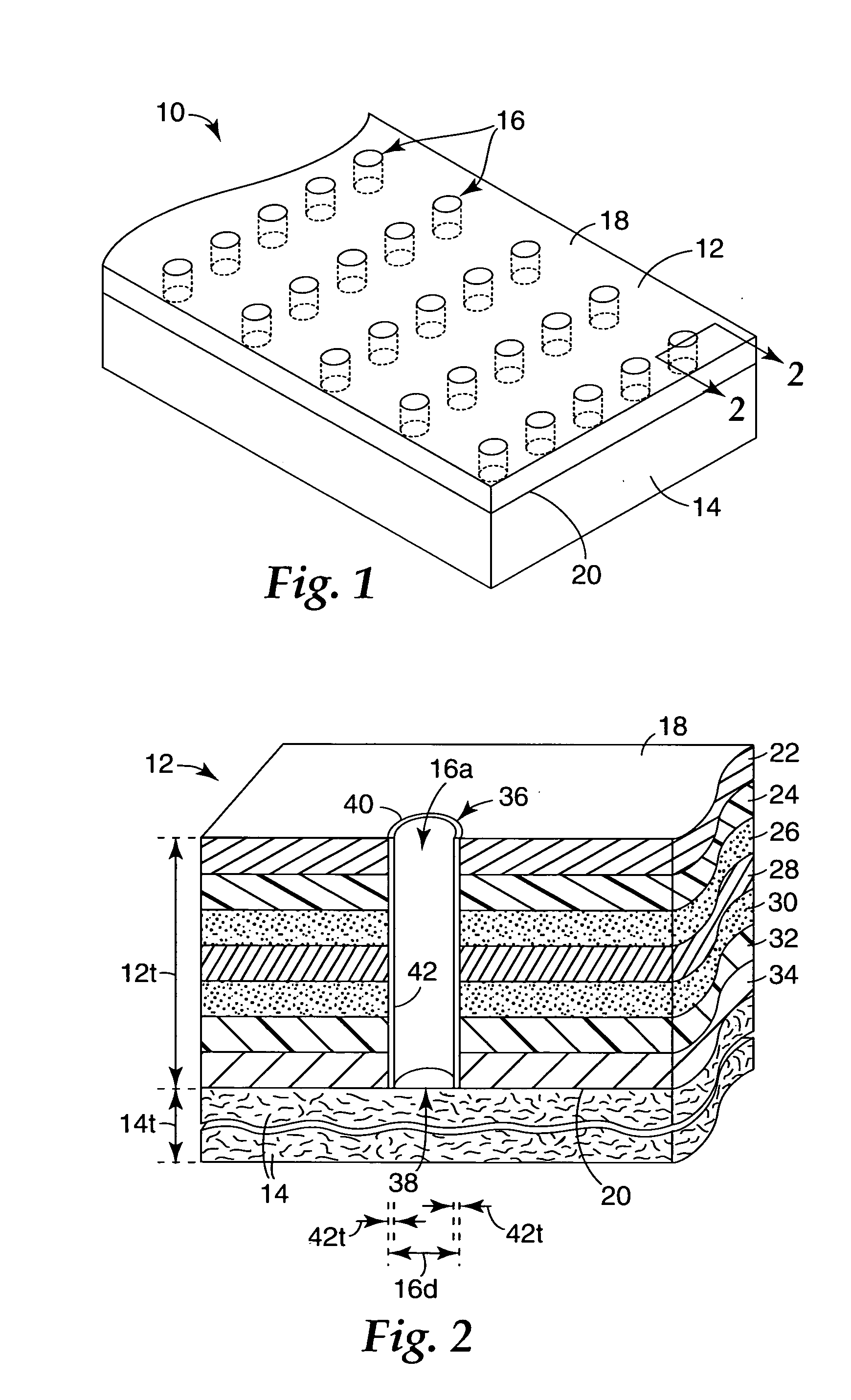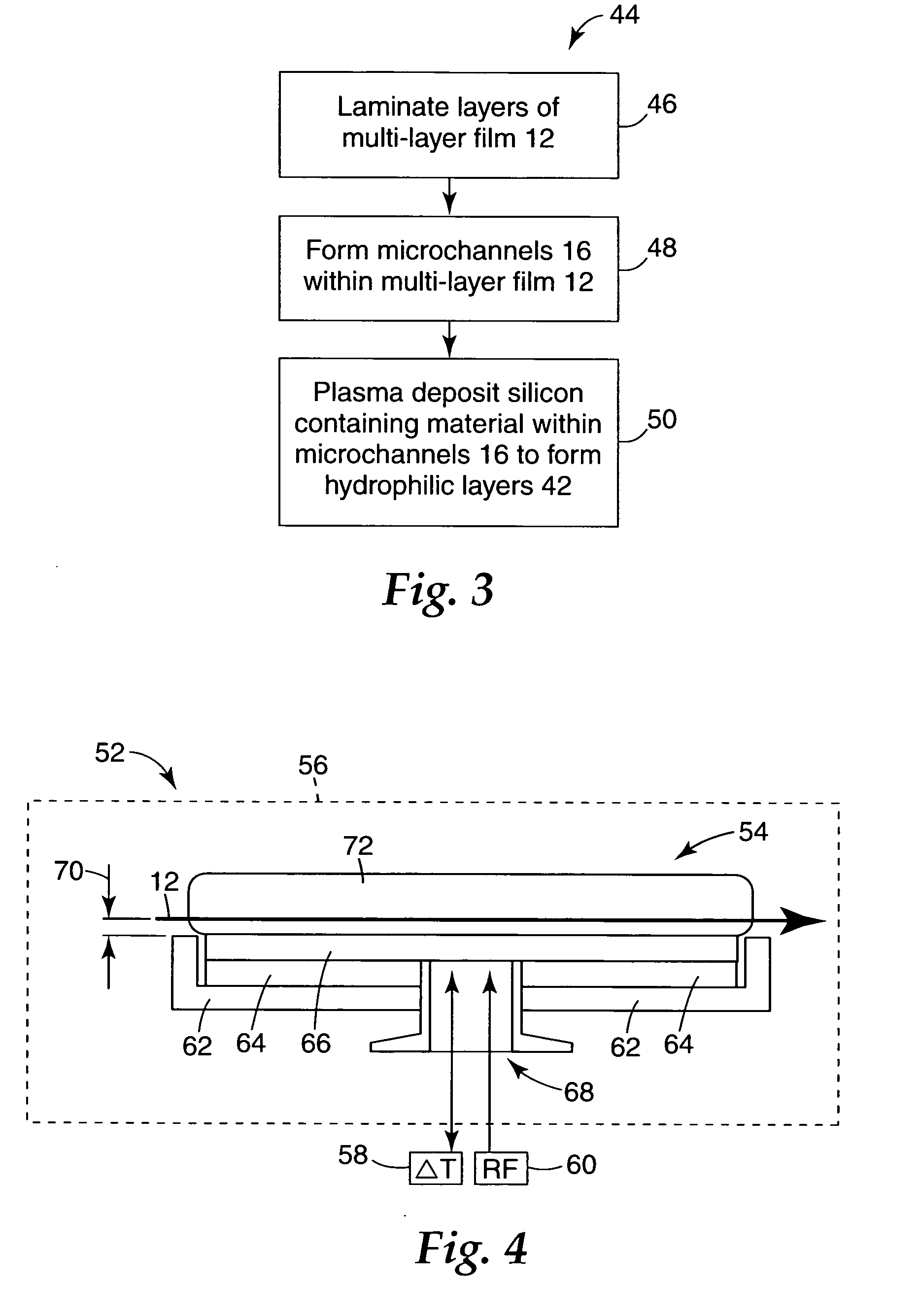Microfluidic device having hydrophilic microchannels
a microfluidic device and microchannel technology, applied in the field of microfluidic devices, can solve the problems of large space requirements for samples and equipment, large space requirements for screening large numbers of samples using existing parallel screening methods, and inability to meet the requirements of sample and equipment, and achieve the effect of rapid flow rate of test fluids
- Summary
- Abstract
- Description
- Claims
- Application Information
AI Technical Summary
Benefits of technology
Problems solved by technology
Method used
Image
Examples
example 1
[0059] The microfluidic device of Example 1 included a DLG-based hydrophilic layer without the use of an absorbent layer. The microfluidic device was formed by the following procedure. A pair of single-clad copper / polyimide films were laminated to a single one-ounce copper core sheet with the use of polyimide adhesive films. The resulting multi-layer film resembled the seven-layer film arrangement shown in FIG. 2. Each of the single-clad copper / polyimide films had a copper layer thickness of 18 micrometers and a polyimide layer thickness of 25 micrometers. The copper core sheet and the polyimide adhesive films each had layer thicknesses of 35 micrometers. The two outer copper layers were then plated with copper up to 25 micrometers and then flash plated with 5 micrometers of gold. The layer thickness of the overall multi-layer film was about 200 micrometers, and the surface areas of the top and bottom surfaces of the multi-layer film were 16.7 millimeters×16.7 millimeters (taken in ...
example 2
[0064] The microfluidic device of Example 2 included the microfluidic device of Example 1, where a non-woven pad was laminated to the microfluidic device to function as an absorbent layer.
example 3
[0065] The microfluidic device of Example 3 was formed by the same procedure as discussed above for the microfluidic device of Example 1, except that the TMS flow rate was 50 sccm, the pressure was 50 milliTorr, and the treatment time of the multi-layer film in the TMS / O2 plasma was five seconds. After the plasma deposition process, a non-woven pad was laminated to the microfluidic device to function as an absorbent layer.
PUM
| Property | Measurement | Unit |
|---|---|---|
| dielectric constants | aaaaa | aaaaa |
| dielectric constants | aaaaa | aaaaa |
| thicknesses | aaaaa | aaaaa |
Abstract
Description
Claims
Application Information
 Login to View More
Login to View More - R&D
- Intellectual Property
- Life Sciences
- Materials
- Tech Scout
- Unparalleled Data Quality
- Higher Quality Content
- 60% Fewer Hallucinations
Browse by: Latest US Patents, China's latest patents, Technical Efficacy Thesaurus, Application Domain, Technology Topic, Popular Technical Reports.
© 2025 PatSnap. All rights reserved.Legal|Privacy policy|Modern Slavery Act Transparency Statement|Sitemap|About US| Contact US: help@patsnap.com



